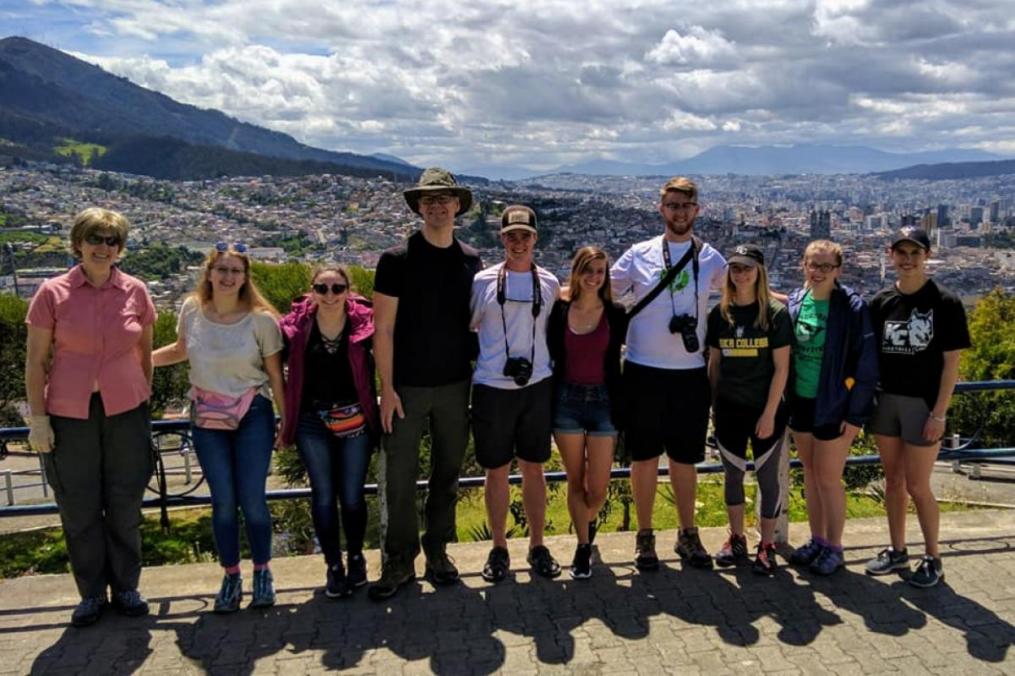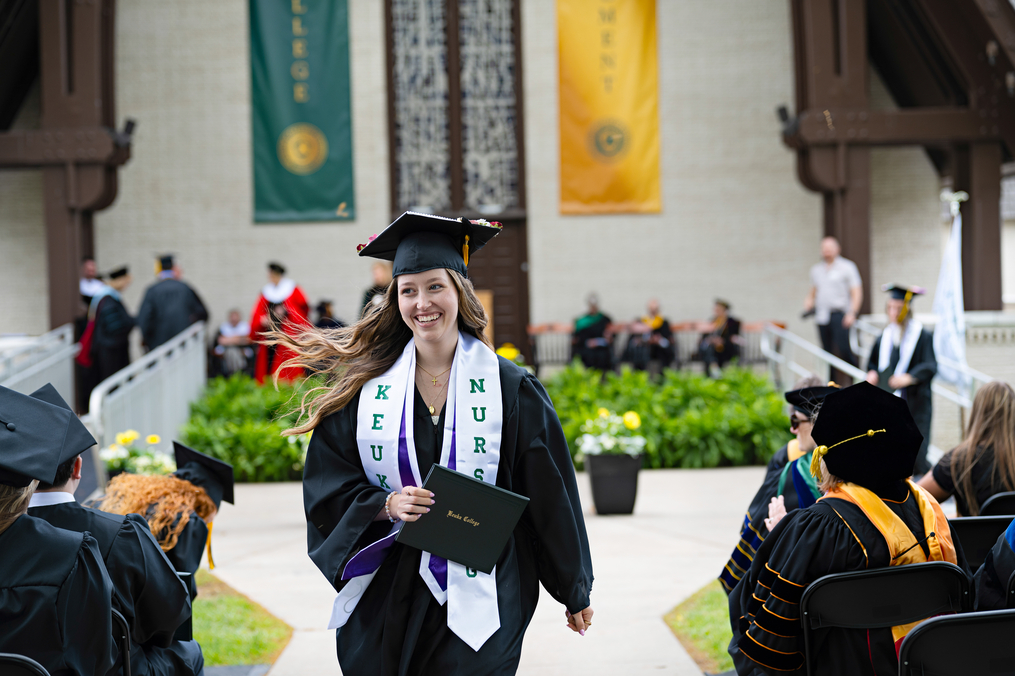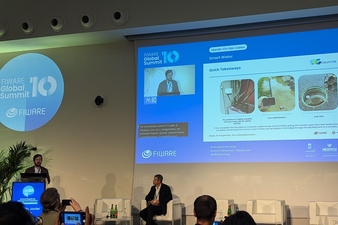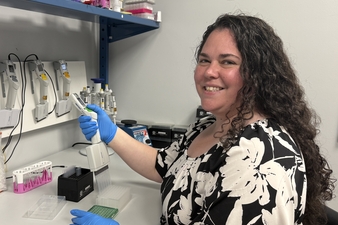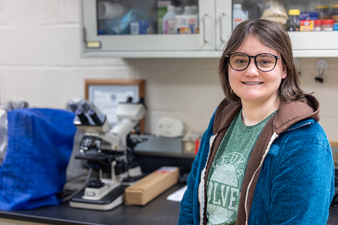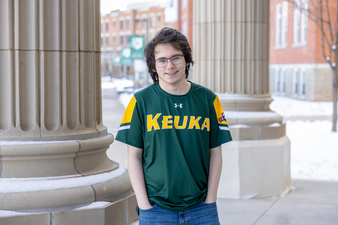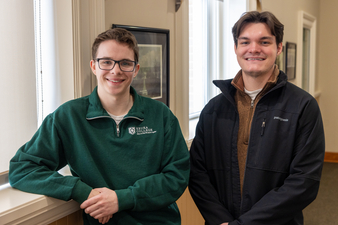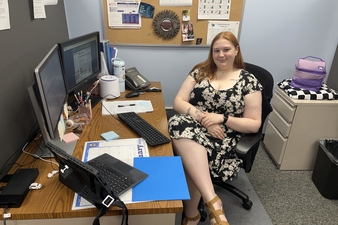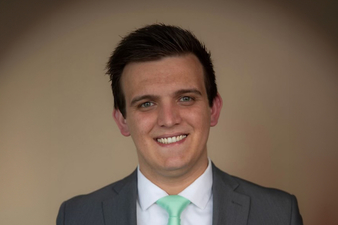According to Dr. Mark Sugalski, associate professor of biology and chair of the Division of Natural Sciences and Mathematics at Keuka College, if you have the chance to visit a UNESCO World Heritage site, you should just go.
In June 2018, Dr. Sugalski followed his own advice when he led several Keuka College students on a group Field Period® trip to Ecuador and the Galapagos Islands. Both the city of Quito, Ecuador, and the Galapagos Islands have been listed as UNESCO World Heritage sites since 1978. Such sites are deemed to have cultural, historical, or scientific significance and are internationally protected.
“This was my first time leading a group on an international trip, and it was awesome,” says Dr. Sugalski. “Quito is thousands of years old, the churches are gold leafed, and we saw giant angels overlooking the town. The students didn’t speak much Spanish, and the local people didn’t speak much English, so the students were nervous when ordering food and other things for themselves. But with practice, they managed quite well.”
In addition to Quito, the 12-day itinerary included stops on Isabela Island, Santa Cruz Island, San Cristobal Island, the Mindo Cloud Forest, Palacio Real, and Riobamba.
Kate Snipas ’21, an occupational science major from Mountain Top, Pennsylvania, says “there’s no better place to study the environment than where Darwin crafted the theory of evolution.”
Kate, Dr. Sugalski, and the other students were able to visit the Charles Darwin Research Station, located on Santa Cruz Island.
“We were able to see a tortoise-breeding facility,” says Dr. Sugalski. “Rats are an invasive species, and they eat the tortoise eggs, as well as the babies. It takes about four years for a tortoise to grow large enough that the rats won’t bother them. So facilities like this are so important to the health of the tortoise population.”
On Isabela Island, the group toured another tortoise-breeding facility, and were able to snorkel with marine life.
“It was God-like, and phenomenal,” says Dr. Sugalski. “We saw huge blue-footed boobies, lots of iguanas, watched the sea lions tease the sharks, and other marine reef life. It was a bucket-list check-off, for sure.”
That bucket list received another checkmark next to “snorkeling” as the group toured San Cristobal.
“If you told me this time last year that I’d be sunbathing with sea lions in San Cristobal, Galapagos, I’d have told you that you were insane,” says Kate. “I’ve never snorkeled before this trip, and once I got adjusted to the mask, I loved it. It’s an entirely new world below the surface of the water. I couldn’t believe that I was within 10 feet of a sea turtle!”
It wasn’t just sea turtles Kate and the group were able to see. They saw more sea lions, marine iguanas, crabs, and birds.
“We had a naturalist guiding us,” says Dr. Sugalski. “Not only did he explain things, but he took us to different areas and showed us a lot of the native wildlife. We also explored the town and toured a sanctuary where tortoises roam free. We were able to intermingle with these guys in their natural environment, but in a controlled way.”
But it was a stop in the Palacio Real Andean Villages of Riobamba that Dr. Sugalski says made perhaps the greatest impact on the students.
“We were able to play soccer with some of the local children, and they were really good!” he says. “Soccer was the common language and the students and children got along wonderfully. They all fell in love with the kids, and I think they made some really good friendships.”
Kate agrees.
“My favorite activity was playing with the kids in Palacio Real,” she says. “Before the trip, I was on the fence between working with pediatric or geriatric patients. I loved spending time with the little ones, and now I want to go into pediatric occupational therapy. These kids were so happy and so full of energy. Yes, we spoke broken Spanish, but they didn’t care. We let soccer bridge the language barrier and had fun!”
Kate says one of the girls, Jhomora, pulled her out of the game because she wanted to braid Kate’s hair.
“Jhomora and her friends wanted to see pictures and hear stories about the U.S.,” says Kate, who happily obliged. “Jhomora politely corrected me when I used the wrong verb tense (trying to speak Spanish), but she was just happy that I was trying. Seeing their faces light up when they learned a new English word still makes me smile thinking about it.”
In addition to exploring some of the Galapagos Islands, the group also toured the Mindo Cloud Forest.
“We toured bird sanctuaries, and saw a ketzel, a really rare, endangered bird,” says Dr. Sugalski. “We also toured an organic chocolate factory, and a butterfly sanctuary, where we were encouraged to interact with them and even got to hold them! We hiked in the rain forest, and up to a waterfall, where we stayed and played in.”
For Dr. Sugalski, this trip to the Galapagos Islands was a bucket list trip. But it was also so much more.
“It was a great trip, and all of the students got along really well,” he says. “All of them grew as individuals, and I think this made them want to explore more new cultures and foods. They developed new bonds, overcame a lot of cultural differences, and pushed personal boundaries. They truly immersed themselves and it was amazing.”
“I enjoyed every second of this experience, and I couldn’t have asked for a better group to do it with!” says Kate. “I learned that trying new things has no bounds. I never thought that I’d even consider eating llama until there was a plate full of it in Palacio Real. This may come as a surprise, considering we hiked to a waterfall and snorkeled in the Galapagos Islands, but those little ones squirmed their way into my heart.”
Other students who went on this trip were Emily Demko ’21, a medical technology major from Huntington Mills, Pa.; Victoria Aman ’20, a biology major from Canandaigua; Makayla Davies ’21, a biochemistry major from Catskill; Robert (Eli) Tremblay ’21, an occupational science major from North Collins, N.Y.; Daniel Lazzaro ’20, an environmental science major from Massapequa, N.Y.; Taylor Lessard ’20, a criminology/criminal justice major from Clay; and Jessie Cecere ’20, an occupational science major from Cheektowaga.
Want to Learn More about our Natural Science Degrees?
Fill out our form to connect with us to find out!


